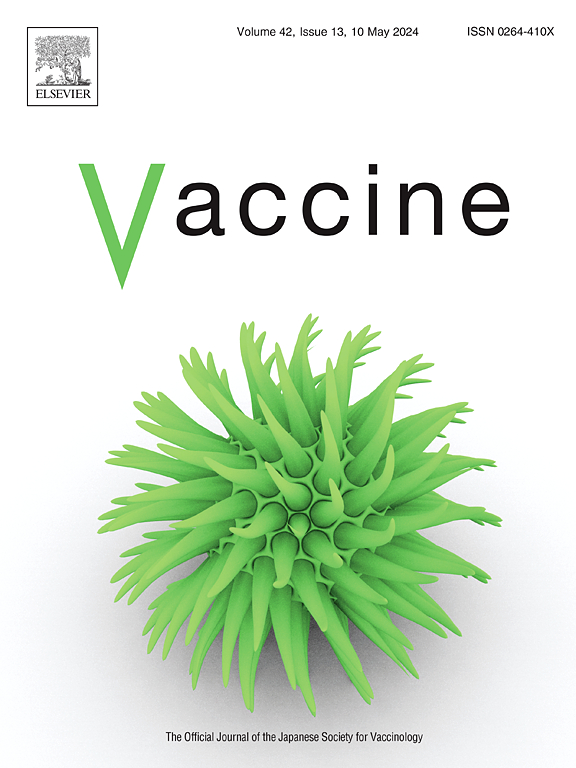Immunogenicity and safety at twelve months of fractional and standard BNT162b2 booster doses in adults primed with ChAdOx1-S, BBIBP-CorV, or Gam-COVID-Vac in Mongolia: a randomised controlled trial
IF 4.5
3区 医学
Q2 IMMUNOLOGY
引用次数: 0
Abstract
Background
COVID-19 vaccine booster doses counteract waning immunity and vaccine escape by emerging variants. We evaluated long-term immunogenicity and safety of fractional and standard BNT162b2 vaccine booster doses in Mongolia.
Methods
In this randomised, controlled, non-inferiority trial, adults primed with two doses of ChAdOx1-S, BBIBP-CorV, or Gam-COVID-Vac were randomised (1:1) to receive a 15 μg (fractional dose) or 30 μg (standard dose) BNT162b2 booster. Geometric mean ratios (GMR) of IgG and surrogate virus neutralising test (sVNT) levels (Wuhan-Hu-1 and Omicron BA.1) were compared over 12 months. SARS-CoV-2 infections, and adverse and serious adverse events (SAEs), were documented. ClinicalTrials.gov Identifier: NCT05265065.
Results
Of 601 participants randomised between May 27th and September 30th, 2022, 2 (0.3 %) were lost to follow-up and 19 (3.2 %) withdrew by 12 months. IgG levels declined from 28 days to six months, stabilising thereafter. At 12 months, IgG levels were lower in the fractional compared with the standard arm for ChAdOx1-S primed participants (GMR 0.78 [95 % CI 0.63–0.96], p = 0.017). At six and 12 months, the median sVNT inhibition percentages were comparable by study arm and priming strata. Documented SARS-CoV-2 infections occurred in 25 participants (fractional dose arm n = 12; standard dose arm n = 13). From 28 days, 228 undocumented infections (≥ 1.2-fold IgG increase) occurred (fractional arm n = 112; standard arm n = 116). SAEs (n = 41) were balanced between arms, with no severe vaccine-related AEs or SAEs reported.
Conclusions
15 μg and 30 μg BNT162b2 boosters demonstrated comparable immunogenicity and favourable safety. 15 μg BNT162b2 booster doses may improve vaccine acceptability due to lower reactogenicity.
蒙古国经ChAdOx1-S、BBIBP-CorV或Gam-COVID-Vac预处理的成人在接受少量和标准BNT162b2加强剂12个月时的免疫原性和安全性:一项随机对照试验
背景:covid -19疫苗加强剂可以抵消免疫力下降和新变体的疫苗逃逸。我们在蒙古评估了BNT162b2疫苗分级和标准加强剂的长期免疫原性和安全性。方法在这项随机、对照、非劣效性试验中,接种了两剂ChAdOx1-S、BBIBP-CorV或Gam-COVID-Vac的成年人被随机(1:1)分组,分别接受15 μg(分数剂量)或30 μg(标准剂量)的BNT162b2增强剂。在12个月内比较IgG和替代病毒中和试验(sVNT)水平(Wuhan-Hu-1和Omicron BA.1)的几何平均比(GMR)。记录了SARS-CoV-2感染以及不良和严重不良事件(SAEs)。ClinicalTrials.gov标识符:NCT05265065。在2022年5月27日至9月30日期间随机分配的601名参与者中,2名(0.3%)失去了随访,19名(3.2%)在12个月内退出。IgG水平从28天下降到6个月,此后趋于稳定。在12个月时,与标准组相比,ChAdOx1-S启动组的IgG水平较低(GMR为0.78 [95% CI 0.63-0.96], p = 0.017)。在6个月和12个月时,sVNT抑制百分比的中位数在研究组和启动层之间具有可比性。25名参与者发生了记录在案的SARS-CoV-2感染(部分剂量组n = 12;标准剂量组n = 13)。从28天开始,发生228例未记录的感染(IgG升高≥1.2倍)(小组n = 112;标准组n = 116)。急性呼吸道感染事件(n = 41)在两组之间达到平衡,没有严重的疫苗相关不良反应或急性呼吸道感染事件的报道。结论15 μg和30 μg的BNT162b2增强剂具有相当的免疫原性和良好的安全性。15 μg的BNT162b2加强剂量可能由于较低的反应原性而提高疫苗的可接受性。
本文章由计算机程序翻译,如有差异,请以英文原文为准。
求助全文
约1分钟内获得全文
求助全文
来源期刊

Vaccine
医学-免疫学
CiteScore
8.70
自引率
5.50%
发文量
992
审稿时长
131 days
期刊介绍:
Vaccine is unique in publishing the highest quality science across all disciplines relevant to the field of vaccinology - all original article submissions across basic and clinical research, vaccine manufacturing, history, public policy, behavioral science and ethics, social sciences, safety, and many other related areas are welcomed. The submission categories as given in the Guide for Authors indicate where we receive the most papers. Papers outside these major areas are also welcome and authors are encouraged to contact us with specific questions.
 求助内容:
求助内容: 应助结果提醒方式:
应助结果提醒方式:


